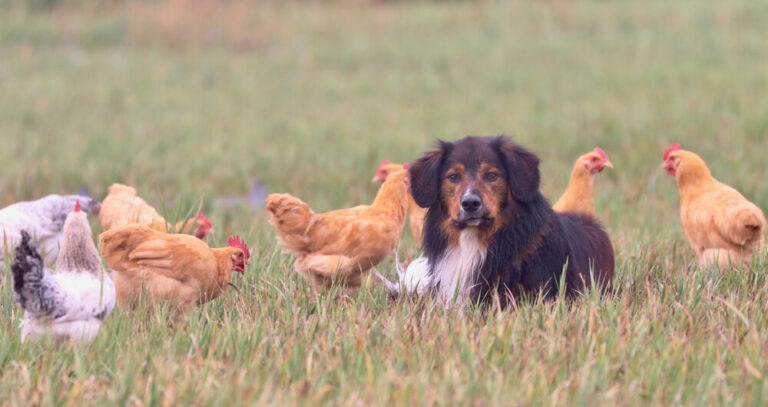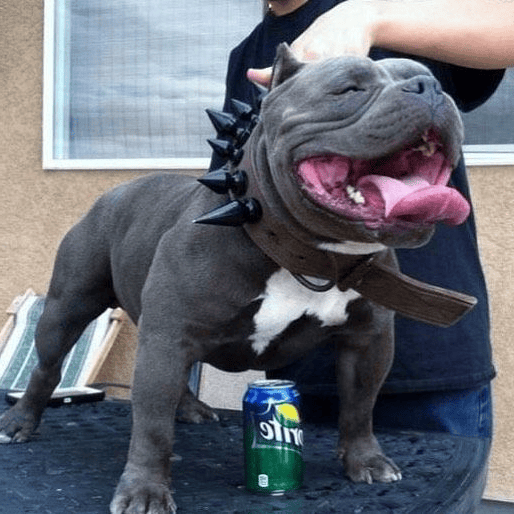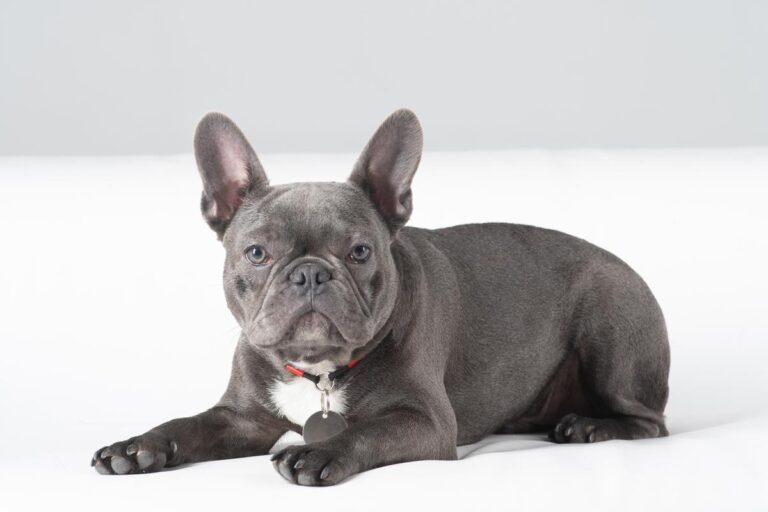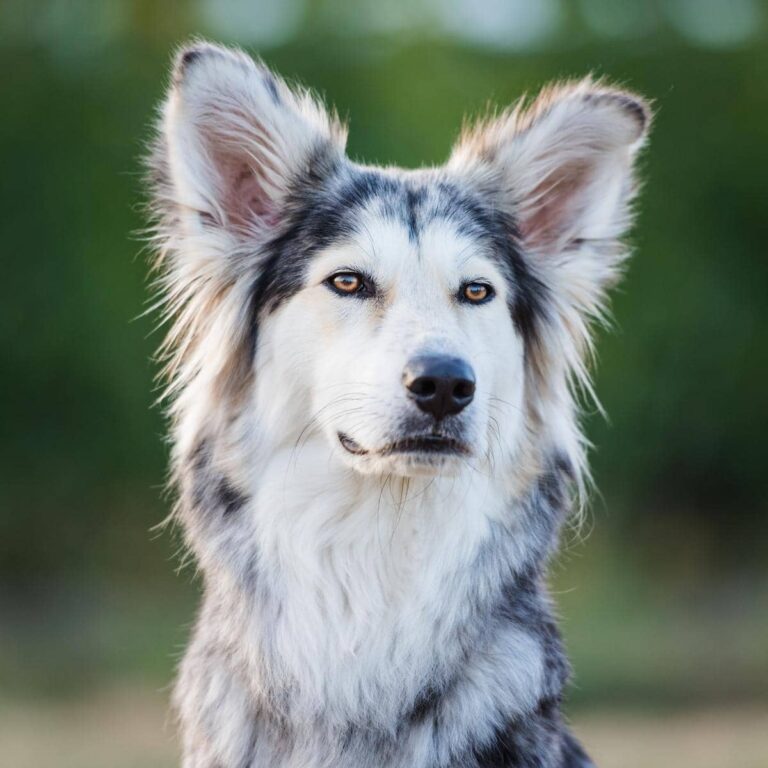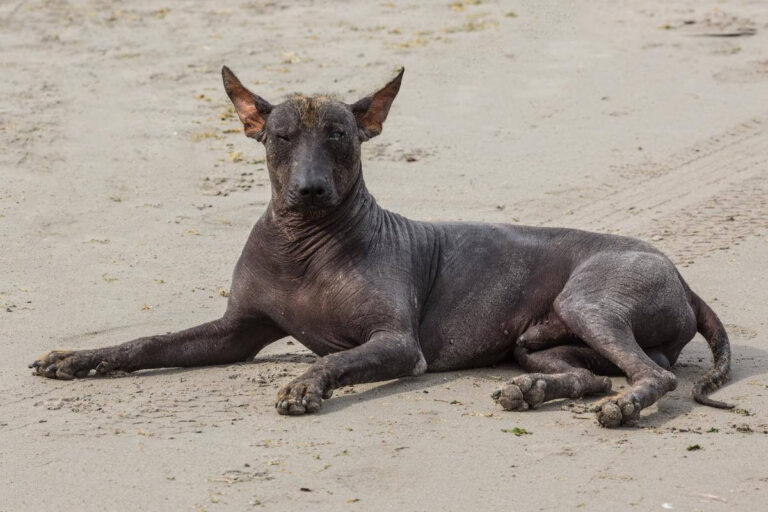Enchanting Lilac Pitbull: A Rare Beauty Among Canines
Step into the world of Lilac Pitbull mesmerized by their enchanting coat colors. These dogs are unique, from the soft hues of lilac to the striking patterns of merle pitbull and blue merle pit bulls.
Discover with us the beauty of their subtle purple or lavender appearance and the marbled patches of darker color on a lighter base.
Explore the extraordinary charm of Lilac, Merle pitbull, and blue Merle pitbull and experience their gentle and lively personalities. Get ready to be captivated by these exceptional dogs.
Also Read: Big Rope French Bulldog – Ultimate Guide
Lilac Pitbull
Lilac Pitbull is a rare and unique breed of American Pitbull Terrier. They are similar to other species of standard Pitbulls, with the only distinction being the color of their coat.
The Lilac Pitbull has a light-colored jacket with a slight mix of blue and grey tones, giving it a distinguishing appearance.
The Lilac color is a diluted shade of blue or grey, giving the dog a subtle purple or lavender appearance. While they may look scary but lavender Pitbulls are gentle giants.
They are well-known for their perseverance, wisdom, and strength. They are also incredibly affectionate and lively.
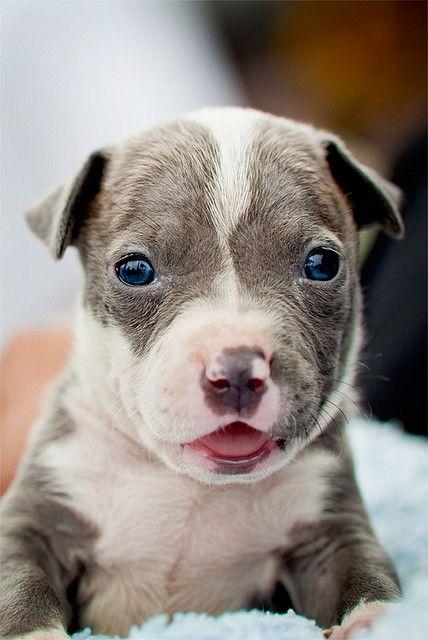
Lilac Pitbull Puppy
Lilac Pitbull pups are a rare tri-color Pitbull breed. They have a lavender background with tan spots on their paws, muzzle, ears, and hindlegs. The lilac color is uncommon, making the Lilac Pitbull unique among tri-colors.
Pitbulls are robust canines with short coats in various colors and patterns. They are muscular, sturdy, and compact.
Lilac Pitbull pups have excellent attention spans, are easy to train, and possess exceptional intellect, strength, stamina, and agility.
They are wonderful pets for families with children since they are gentle and kind.
Lilac Pitbull Breed
Lilac Pitbull is a color variation within the American Pit Bull Terrier breed. American Pit Bull Terrier is a recognized breed.
Still, the term “Lilac Pitbull” is not an officially recognized or accepted term by major kennel clubs like the American Kennel Club (AKC) or the United Kennel Club (UKC).
These kennel clubs primarily recognize the standard colors and markings for the breed.
When deciding which dog to choose, it’s important to remember that coat color should not be the sole determining factor.
Instead, prioritize crucial aspects like the dog’s health, temperament, and compatibility with your lifestyle.
If you are looking for a Lilac Pitbull or any other Pitbull breed, working with ethical breeders and prioritizing their dogs’ complete well-being is critical.
To preserve the overall quality of the species, breeders should develop a loving atmosphere, guarantee good socialization, and undertake frequent health examinations.
By considering these qualities, you may make an informed selection and choose a partner that is a good fit for you and your family.
Color Variations of Lilac Pitbull
Lilac Pitbulls are known for their eye-catching color variations, which make them stand out in the world of dogs. With their unique and mesmerizing coat colors, Lilac Pitbulls bring the breed a touch of elegance and charm.
From the soft and delicate hues of light lilac to the captivating patterns of merle pitbull and blue merle pitbull, these color variations highlight the individuality and beauty of each Lilac Pitbull.
Food & Nutrition for the Dogs
Food and Dietary Requirements
- Banana: Dogs can enjoy the natural sweetness and health benefits of bananas in moderation.
- Asparagus: A nutritious veggie that can be a crunchy and tasty treat for your furry friend.
- Strawberry: Rich in vitamins, strawberries make a delightful occasional snack for dogs.
- Orange Chicken: Plain cooked chicken without spices or sauces can be a safe protein source for dogs.
- Almond Butter: Avoid almonds, but dogs can indulge in unsalted and unsweetened almond butter as an occasional treat.
- Quesadilla: Plain tortilla with a small amount of cheese can be a simple treat for dogs.
- Pita Bread: A small piece of plain pita bread can be given as an occasional snack.
- Ricotta Cheese: Dogs may enjoy a little ricotta cheese as an occasional treat, but avoid excessive amounts.
- Provolone Cheese: Offer a tiny piece of provolone cheese as a special reward for your furry companion.
- Banana Pudding: Plain banana pudding without additives or artificial sweeteners can be an occasional treat.
- Watermelon: A refreshing and hydrating fruit that dogs can enjoy in small, seedless portions.
- Coffee Chew Wood: Coffee and any type of wood should be kept away from dogs, as they are harmful.
- Oatmeal Cream Pie: Avoid sugary snacks like oatmeal cream pies, as they are not suitable for dogs.
- Teriyaki Sauce: Skip the teriyaki sauce, as the high sodium content is unhealthy for dogs.
- Mushroom Cream Soup: Keep creamy soups, especially those with mushrooms, away from your furry friend.
Gut Guard – For Dogs with Irritated Guts
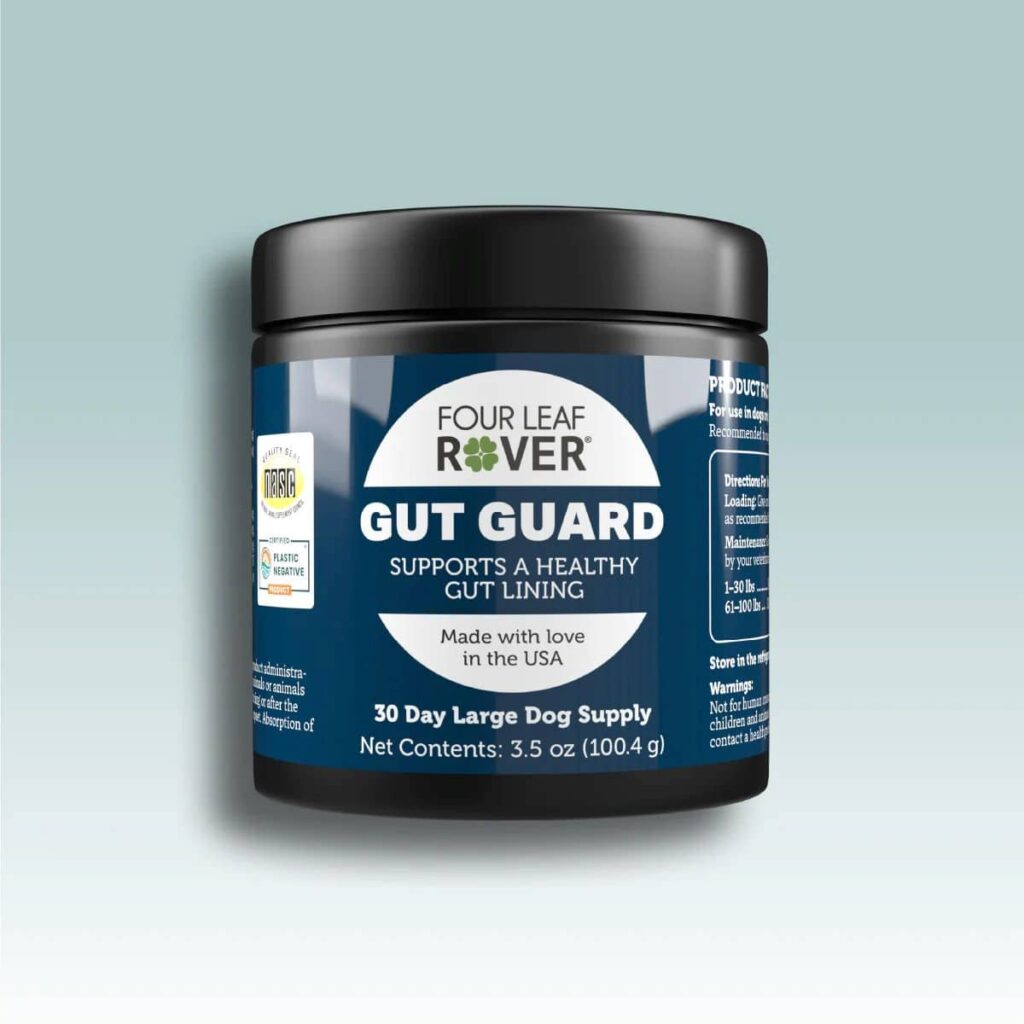
- Gut Guard: A veterinary formulated blend of probiotics and herbs designed to support a normal inflammatory response in the gut and immune system of dogs.
- Supports Gut Health: Many foods, toxins, chemicals, and drugs have the potential to damage the gut lining, making it more permeable, leading to digestive issues.
- Prevents Toxin Leakage: By promoting a healthy gut lining, Gut Guard helps prevent toxins from escaping the gut, reducing the risk of health and immune issues in dogs.
- Combination of Probiotics and Herbs: The unique blend of probiotics and herbs in Gut Guard work synergistically to support gut health and immune function.
- Veterinary Formulated: Developed by veterinary experts to ensure the best possible support for canine digestive and immune systems.
Types of Vitamins and Benefits
Vitamins and Nutritional Pros and Cons
- Banana:
- Vitamin B6:
- Pros: Supports metabolism, immune system, and red blood cell production.
- Cons: Overconsumption may cause gastrointestinal upset due to high fiber content.
- Vitamin C:
- Pros: Acts as an antioxidant, boosts the immune system, and promotes healthy skin.
- Cons: Dogs produce their own vitamin C, so supplementation is usually unnecessary.
- Vitamin B6:
- Asparagus:
- Vitamin A:
- Pros: Essential for vision, immune function, and cell growth.
- Cons: High-fiber content may lead to stomach upset if given in large quantities.
- Vitamin C:
- Pros: Supports the immune system and helps absorb iron.
- Cons: Overfeeding may lead to gas or mild digestive issues.
- Vitamin A:
- Strawberry:
- Vitamin C:
- Pros: Provides a boost to the immune system and has antioxidant properties.
- Cons: Should be given in moderation due to natural sugars.
- Vitamin C:
- Orange Chicken:
- Vitamin B6:
- Pros: Supports metabolism and brain health.
- Cons: Avoid giving chicken with spices or sauces, which can be harmful.
- Vitamin B6:
- Almond Butter:
- Vitamin E:
- Pros: Protects cells from damage and promotes healthy skin and coat.
- Cons: Almonds themselves can be a choking hazard, so avoid direct consumption.
- Vitamin E:
- Quesadilla:
- Vitamin B6:
- Pros: Supports energy metabolism and nervous system function.
- Cons: High-fat content in cheese may lead to weight gain if given excessively.
- Vitamin B6:
- Pita Bread:
- Various B Vitamins:
- Pros: Essential for energy metabolism and nerve function.
- Cons: Pita bread can be high in carbohydrates, so feed in moderation.
- Various B Vitamins:
- Ricotta Cheese:
- Vitamin A:
- Pros: Important for vision and immune system support.
- Cons: High-fat content, so feed in small amounts to avoid weight gain.
- Vitamin B12:
- Pros: Supports nerve function and red blood cell production.
- Cons: Excessive consumption may lead to gastrointestinal upset.
- Vitamin D:
- Pros: Aids calcium absorption and supports bone health.
- Cons: Over-supplementation can lead to toxicity, as dogs can’t regulate vitamin D as effectively as humans.
- Vitamin K:
- Pros: Crucial for blood clotting and bone health.
- Cons: Excessive vitamin K can interfere with blood-thinning medications.
- Calcium:
- Pros: Essential for bone and teeth health, muscle function, and nerve transmission.
- Cons: Over-supplementation can lead to skeletal problems and urinary issues.
- Vitamin A:
- Provolone Cheese:
- Vitamin A, Vitamin B12, Vitamin K, Calcium:
- Pros: Similar to ricotta cheese, these vitamins and minerals offer various health benefits.
- Cons: High-fat and sodium content, so feed in moderation to avoid health issues.
- Vitamin A, Vitamin B12, Vitamin K, Calcium:
- Banana Pudding:
- Vitamin B6:
- Pros: Supports metabolism and various body functions.
- Cons: Pudding may contain added sugars and artificial ingredients, which are not suitable for dogs.
- Vitamin B6:
- Watermelon:
- Vitamin A, Vitamin B6, Vitamin C:
- Pros: Provide essential vitamins and hydration.
- Cons: Remove seeds and feed seedless watermelon in small portions to prevent choking.
- Vitamin A, Vitamin B6, Vitamin C:
Merle Pitbull
The merle pitbull showcases a distinctive coat pattern characterized by marbled patches of darker color on a lighter base.
This unique pattern creates an eye-catching, visually appealing look that separates the Merle pitbull.
The Lilac Merle pitbull exhibits this captivating pattern with shades of lilac and silver-grey, resulting in a mesmerizing appearance.
Still, the Merle gene is known to increase the risk of hearing and vision impairments.
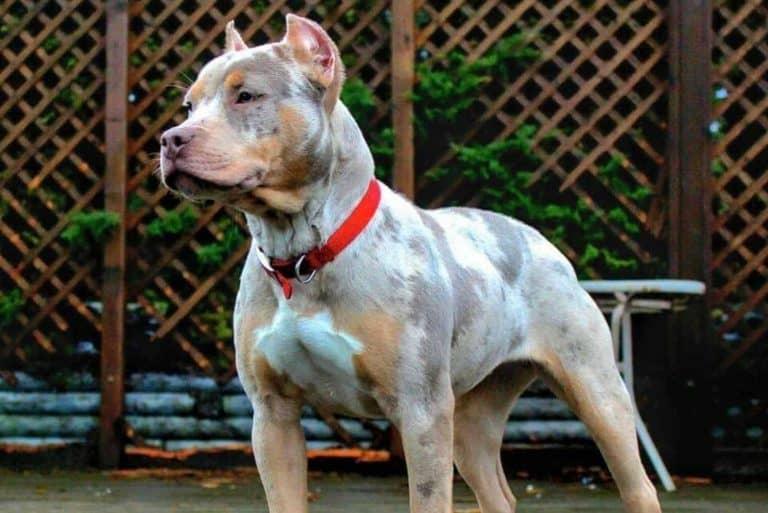
Their striking coat pattern has become a subject of interest within the Pitbull community. Merle Pitbull are often known for their loyalty and loving nature.
They are often described as affectionate, playful, and devoted companions.
Blue Merle Pitbull
Blue Merle Pitbull is a striking color variation within the Pitbull breed. This unique coat pattern combines shades of blue and grey, creating a visually appealing appearance.
The Blue Merle Pitbull stands out for its marbled way, where patches of darker color are dispersed on a lighter base coat.
The blue and grey tones in the coat give the Blue Merle Pitbull a distinct and eye-catching presence. The swirling patterns and variations within the merle pattern create a mesmerizing effect that sets these dogs apart from others.
Each Blue Merle Pitbull possesses a one-of-a-kind coat, with no two dogs exhibiting the same way.
Lilac Brindle Pitbull
Lilac Brindle is a lovely color variant of the Lilac Pitbull breed. This variety blends a lilac base color with darker brindle stripes to create a distinct, eye-catching coat pattern.
The lovely lilac background contrasts sharply with the vivid brindle markings on the Lilac Brindle Pitbull.
The delicate and lovely lilac base color is an excellent canvas for deeper brindle stripes. The brindle pattern comprises darker streaks or bars on the lilac coat, creating a visually pleasing and dynamic appearance.
This color variety highlights the breed’s uniqueness and originality, adding to the Lilac Pitbull’s attractiveness. The Lilac Brindle Pitbull’s coat is a testament to the breed’s beauty and unique genetic makeup.
Arm & Hammer Fruit Twisters Fresh Breath Dental Treats for Dogs in Fruity Strawberry Flavor Baking Soda Dog Treats for Dental Health
Silver Lilac Pitbull
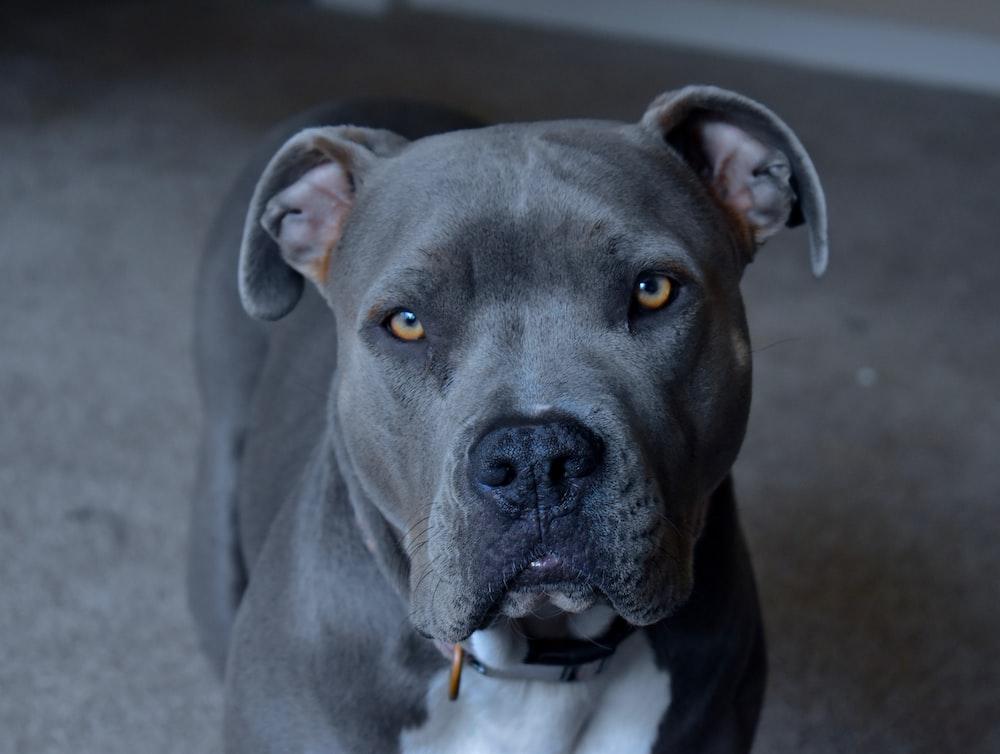
Silver Lilac is a remarkable color variation found within the Lilac Pitbull breed.
This stunning variation combines the lilac base color with silver undertones, resulting in a coat that shows a shimmering effect.
The combination of lilac and silver creates a visually striking contrast that adds depth and dimension to the coat. The lilac hue serves as the foundation, providing a soft and delicate backdrop.
The silver undertones intermingled within the lilac coat catch the light, producing a radiant effect that sets the silver lilac pitbull apart.
The Silver Lilac Pitbull’s coat reflects a sense of elegance and sophistication. The interplay between the lilac and silver hues gives the dog a regal and refined appearance.
Whether in natural light or artificial lighting, the Silver Lilac Pitbull’s coat glimmers and shines, adding a touch of magic and allure to its overall look.
Lilac and White Pitbull
The Lilac and White Pitbull is a variant of the Lilac Pitbull breed.
This variant combines lilac with patches or markings of pure white, providing a visually appealing contrast that improves the overall attractiveness of the coat.
The lavender color serves as a soft and delicate basis, offering an elegant and beautiful backdrop for precise white marks.
The contrast between purple and white gives a visually pleasing effect. The clean, crisp white patterns stand out against the lavender backdrop, providing a remarkable aesthetic impression.
Lilac Pitbulls, Isabella Pitbulls, or Champagne Pitbulls exhibit a unique and stunning color variation. This particular coloration results from specific genetic factors that produce a diluted coat color in pale purple-grey or lavender shades.
For further details and to explore lilac Pitbull color variations. It provides comprehensive information and resources on this specific color variation in Pitbulls.
Are there any Issues with the Lilac Pitbull?
Like any other dog breed, Lilac Pitbulls may be prone to certain health issues and concerns.
It is important to be aware of these potential issues and take appropriate measures to address and manage them. Here are a few common health concerns associated with the Lilac Pitbull breed.
Skin Sensitivities:
Lilac Pitbulls are more prone to skin sensitivities and allergies. Outdoor or dietary allergies may cause itching, redness, or irritation in some pets.
Grooming regularly, using hypoallergenic products, and consulting with a veterinarian can all assist in managing these sensitivities.
Hip Dysplasia:
Hip dysplasia is a hereditary disorder that causes pain and inhibits movement in the hip joints. Some breeds, like Pitbulls, may be more prone to it.
Screening parent dogs for hip dysplasia, for example, can help lessen the probability that the problem will be passed on to the young.

Heart Conditions:
Heart Problems: Lilac Pitbulls, like many more expansive dog breeds, may be predisposed to heart problems such as congenital heart abnormalities or dilated cardiomyopathy. Regular cardiac screenings can help to detect and manage these conditions.
Eye Issues:
Some Lilac Pitbulls are prone to visual disorders like cataracts, progressive retinal atrophy (PRA), or cherry eye. Regular veterinary checkups and eye care can help identify and manage these issues.
WOPET Automatic Smart Feeder Dog Food Dispense with Camera,7L App Control
How to Take Care of a Lilac Pitbull?
Caring for a lilac Pitbull involves several essential aspects to ensure its well-being. By prioritizing these aspects of care, you can ensure the health and comfort of your beloved lilac Pitbull.
Regular Veterinary Care:
To protect your Lilac pitbull’s health, schedule regular check-ups with a veterinarian. Maintain current vaccines, preventative drugs, and routine checkups.
Balanced Diet:
Provide a healthy and balanced meal appropriate for your pitbull’s age, size, and activity level. Consult your veterinarian to establish the proper amount sizes and select a high-quality dog food that fits their individual nutritional requirements.
Exercise and Mental Stimulation:
Lilac pitbulls are energetic dogs that require regular exercise and mental stimulation to thrive. Engage them in daily activities such as walks, playtime, interactive toys, and training sessions to keep them physically and mentally stimulated.
Socialization:
Socialize your Lilac pitbull from a young age to ensure they are comfortable and well-behaved around people, other animals, and different environments.
Expose them to various situations, sounds, and experiences in a positive and controlled manner.
Training and Obedience:
Provide consistent and positive reinforcement-based training to establish good behavior and obedience.
Teach basic commands and reinforce desired behaviors to ensure your Lilac pitbull becomes a well-mannered companion.

Grooming:
Regularly brush your Lilac pitbull’s coat to remove loose hair and keep it clean. Bathe them as needed, using dog-specific shampoos that maintain the natural oils of their skin.
Trim their nails, clean their ears, and brush their teeth regularly to maintain overall hygiene.
FAQs
What is a Lilac Pitbulls?
Lilac Pitbulls are a relatively uncommon and sought-after type of Pitbull, often considered more rare and expensive. They are known for their distinctive coat color, a diluted shade of blue, presenting a pale and silver-grey hue.
These Pitbulls are often described as gentle and loving, and their unique coloration adds to their appeal among the breed admirers.
Due to their rarity and captivating appearance, Lilac Pitbulls have become increasingly sought after within the breed.
How to Breed Color Pitbulls Lilac?
To breed Lilac pitbulls, select parent dogs with the Lilac gene or a high probability of carrying it. Both parents should carry the dilution gene responsible for the Lilac coat color.
Ensure the parent dogs are healthy, genetically tested, and have desirable temperaments.
Follow responsible breeding practices and consult with experienced breeders who have knowledge of color genetics. Seek advice and guidance from experienced breeders who specialize in Lilac pitbulls.
They can provide valuable insights, share their expertise in color genetics, and offer support throughout breeding.
How to Breed Pitbulls Lilac?
Select parent dogs with the Lilac gene or confirmed Lilac ancestry to produce Lilac Pitbulls. This increases the chances of producing Lilac pitbull puppies.
Ensure both males and females have desirable traits, good health, and temperament.
Adhere to appropriate breeding practices like genetic testing, health checks, and sufficient care. Get advice from expert breeders specializing in Lilac pitbulls throughout the breeding process.
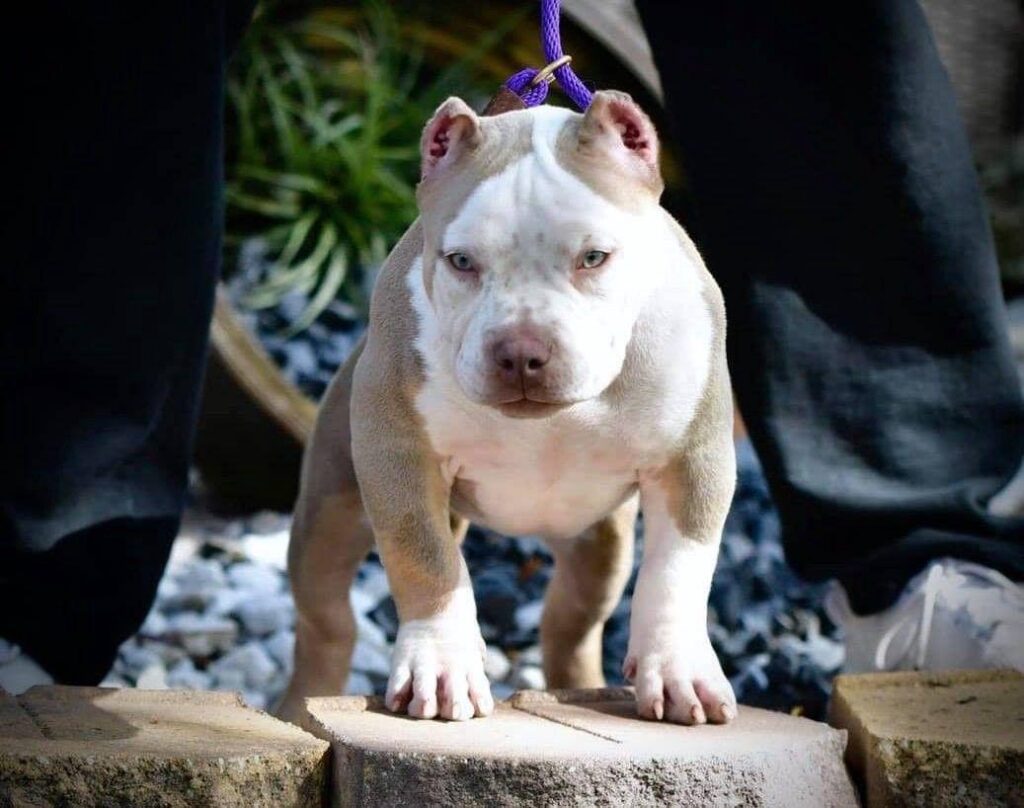
Conclusion
Lilac Pitbulls are a unique and sought-after type of Pitbull known for their distinctive coat color.
Whether it’s the mesmerizing Lilac, the striking Merle or Blue Merle patterns, or the captivating Lilac Brindle or Silver Lilac variations, each color variation adds to the breed’s charm and allure.
Taking care of a Lilac Pitbull involves regular veterinary care, a balanced diet, exercise, socialization, grooming, and a safe and loving environment.
While some health concerns may be associated with the breed, responsible breeding practices and proper care can help mitigate risks.
Lilac Pitbulls are indeed rare and special dogs that capture the hearts of enthusiasts and admirers worldwide.
